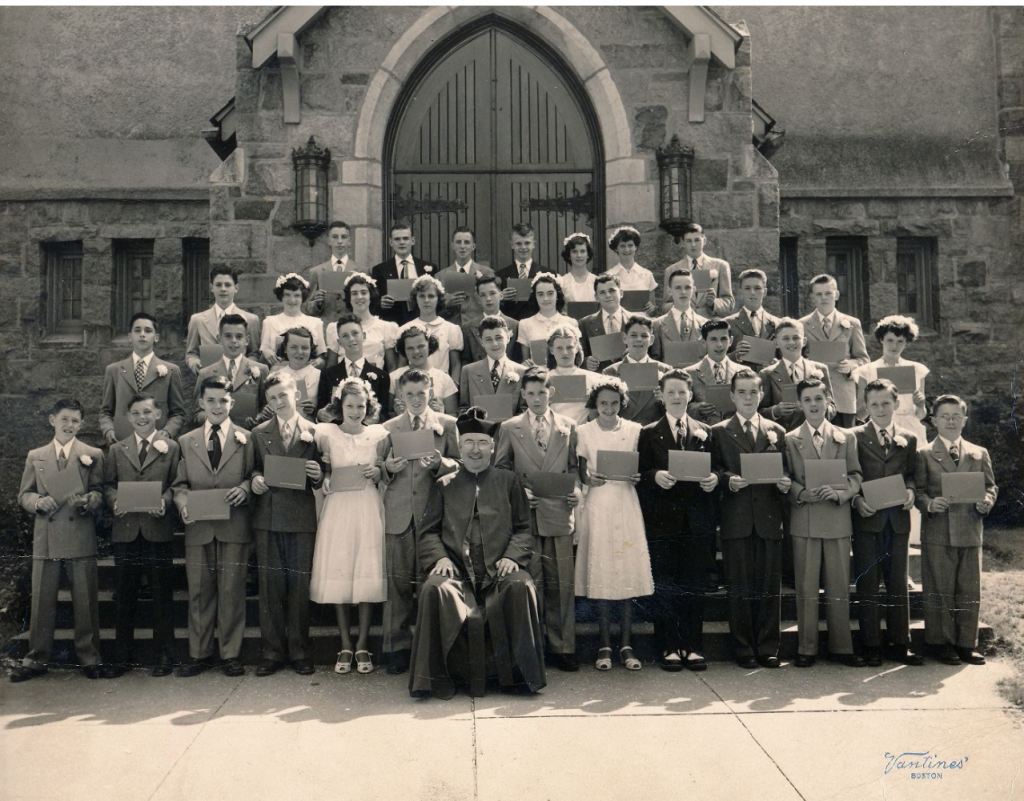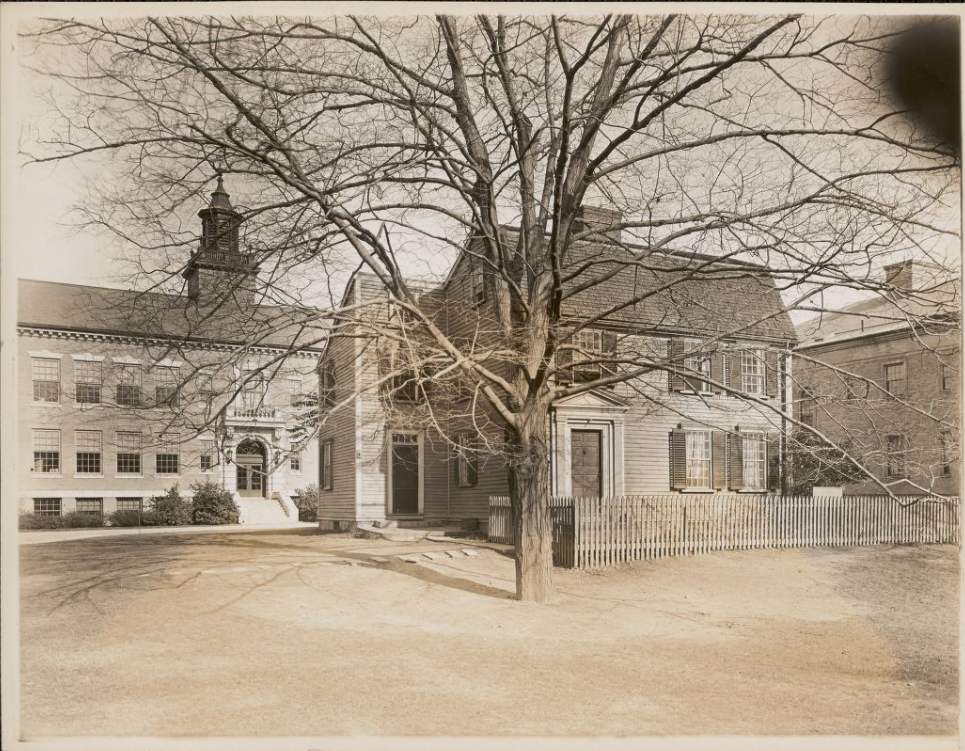37 Province Street, Downtown Boston
“Our aim is not only to teach facts, but social, democratic understanding.” So stated Dr. Harrison L. Harley, a professor at Simmons College, in reference to the pending opening of the Samuel Adams School for Social Studies, according to The Boston Globe. The school advertised itself as committed to a “Democratic America in a world of peace,” one that stood “shoulder to shoulder with the common people.”

What the Globe characterized as a night school opened on September 25, 1944. The school’s initial offerings were 12-week courses that met one night a week; the cost of enrollment was $6. Over time, courses included the Negro in American Life, the Jewish People, Knowing the Soviet Union, Child Psychology, Contemporary Literature, and History of American Labor.
Its offerings also included Modern Art and Music Appreciation, in addition to courses on socialism and fascism; on Saturday mornings, there were story hours and music lessons for young children and a course on current events for youth, 12-16. Moreover, writes historian Allison Hepler. the school “sponsored a film series and a weekend workshop in folklore and literature, summers courses at Camp Annisquam in Gloucester, and an amateur theater group.” A key focus of the leftist institution was trade union education. It thus offered workshops on collective bargaining and shop steward training.
The Samuel Adams School for Social Studies was one of several adult education institutions across the United States affiliated with the Communist Party. Others were located in cities such as Chicago, Cleveland, Detroit, Newark, Philadelphia, San Francisco, Seattle, and St. Louis. The largest and most well-known was the Jefferson School of Social Science in New York City; it had more than 45,000 students in its first four years of existence.
Schools for “Marxist studies” arose during World War II, a time when the U.S. Communist Party “took a super-patriotic ideological turn” asserts historian Marvin Gettleman. They were the descendants, in effect, of Party-run “Worker Schools” that emerged in the 1920s. But instead of focusing first and foremost on recruiting and educating members of the Party, the new schools were concerned with broad engagement with the cities in which they were located. As such, they had a greatly expanded curriculum and many more students than had been the case with the worker schools—some of them at their peak had thousands of students each term. The Samuel Adams School reported that 449 students, ranging from the ages of 16 to 60 and representing a wide array of occupations and backgrounds, enrolled during its first term. “Yes, truly a People’s School was born,” it proclaimed in its Winter Term 1945 course catalog.
Labor unions often sponsored and helped to finance the schools. Administrators of these adult education centers, as well as many (but certainly not all) of the faculty, were typically members of the Communist Party. In the case of Boston’s Samuel Adams School, manifesting the broad social ties that the Party engendered and enjoyed at the time, its “faculty list was Communist and non-Communist,” says Hepler; and its board of trustees included two Protestant ministers, an editor of The Jewish Advocate newspaper, trade unionists, and the head of a major publishing house.
Following World War II and with the emergence of the Cold War, strong anticommunist sentiment reemerged across the United States. In Boston and, more broadly, in Massachusetts—“something of a pioneer in red scare politics” in the words of historian M. J. Heale—leading politicians, Democrat and Republican alike, and elements of the Catholic Church hierarchy helped to fan the flames of anti-Left hysteria.* In this context, the Samuel Adams School, along with sister institutions in other cities, became a target for FBI infiltration and state repression.
In 1947, U.S. Attorney General Tom Clark added the Samuel Adams School, one of 11 schools included, to his list of “subversive” organizations. Several months later, in October 1948, the Internal Revenue Bureau stripped the school—and 39 other “subversive” entities—of its tax-free status. However, it appears that the Samuel Adams School for Social Studies had already closed its doors by this time.
It is unclear when exactly the Samuel Adams School ceased operations. According to Allison Hepler, it was in May 1948. Similarly, the July 8, 1948 issue of Counterattack, an anti-communist newsletter founded by three former FBI agents, claims that school closed in the spring of 1948, while suggesting that it was, in part, due to the newsletter’s “exposure” of the institution in its initial issue in 1947. As a result of such publicity, and the U.S. Attorney General’s subsequent inclusion of the school on his list of subversive organizations, the newsletter explained, “Some people in and near Boston who had been giving money to the school got scared. So the school folded up in the spring.”
Through much of the 1950s, authorities on the federal level and within Massachusetts continued to harass many individuals associated with the Samuel Adams School as part of their anticommunist crusade. In one particularly infamous case in 1953, the Town of Norwood, a Boston suburb, fired Mary Knowles, a librarian, for her alleged communist ties. Knowles had worked as a secretary at the school; in May 1953, she refused to respond to questions regarding membership in the Communist Party when called before the U.S. Senate Internal Security Subcommittee (see Morrill Memorial Library, South Norwood Branch).
The building in which the Samuel Adams School was located no longer exists; it stood a little to the north of where Bosworth Street intersects with Province Street. Like most of the west side of Province Street, the site is now occupied by a development dedicated to luxury condominiums.

Getting there:
Red or Green Line to Park Street Station, or Orange or Red Line to Downtown Crossing Station. The site is a 0.2-mile (4-minute) walk from either station.
To learn more:
Simson Garfinkle, “How an MIT Marxist Weathered the Red Scare,” MIT Technology Review, June 29, 2022.
Marvin E. Gettleman, “Defending Left Pedagogy: U.S. Communist Schools Fight Back Against the SACB (Subversive Activities Control Board) . . . and Lose (1953-1957),” Convergence, Vol. 41, no. 2/3 (2008): 193-209.
Marvin E. Gettleman, “The Lost World of United States Labor Education: Curricula at East and West Coast Communist Schools, 1944-1957,” in Robert W. Cherny, William Issel, and Kieran Walsh Taylor (eds.), American Labor and the Cold War: Grassroots Politics and Postwar Political Culture, New Brunswick, New Jersey: Rutgers University Press, 2004: 205-215.
“Groups Called Disloyal,” The New York Times, December 5, 1947.
M. J. Heale, McCarthy’s Americans: Red Scare Politics in State and Nation, 1935-1965, Athens, Georgia: University of Georgia Press, 1998.
Allison Hepler, McCarthyism in the Suburbs: Quakers, Communists, and the Children’s Librarian, Lanham, Maryland: Lexington Books, 2018.
Judith Larrabee Holmes, “The Politics of Anticommunism in Massachusetts, 1930-1960,” Ph.D. dissertation, Department of History, University of Massachusetts Amherst, 1996.
“Samuel Adams School for Social Studies Will Open Sept. 25,” The Boston Globe, September 11, 1944: 8.
*For examples of anti-Left frenzy in Greater Boston and Massachusetts, see the Sacco and Vanzetti Tour in A People’s Guide to Greater Boston; see also the entry on River Works/General Electric (in Lynn).
Acknowledgment:
Thanks to the Wyner Family Jewish Heritage Center at the New England Historic Genealogical Society for allowing us to peruse its holdings related to the Samuel Adams School for Social Studies.

























